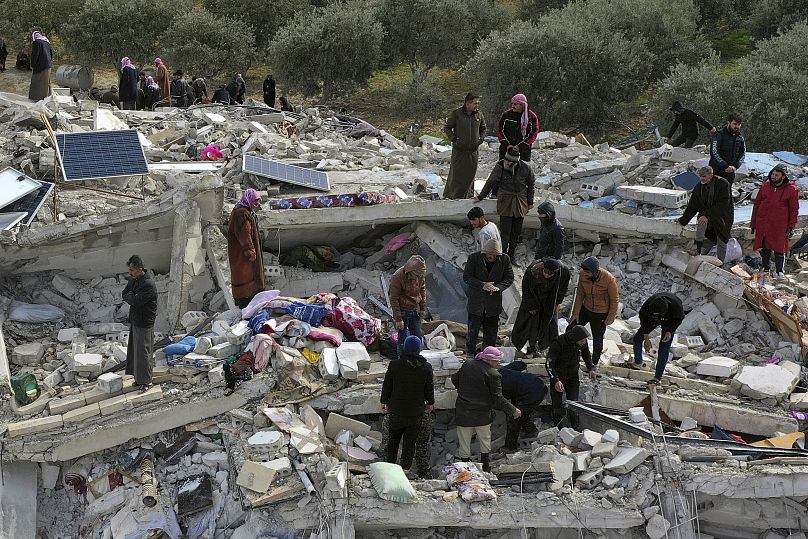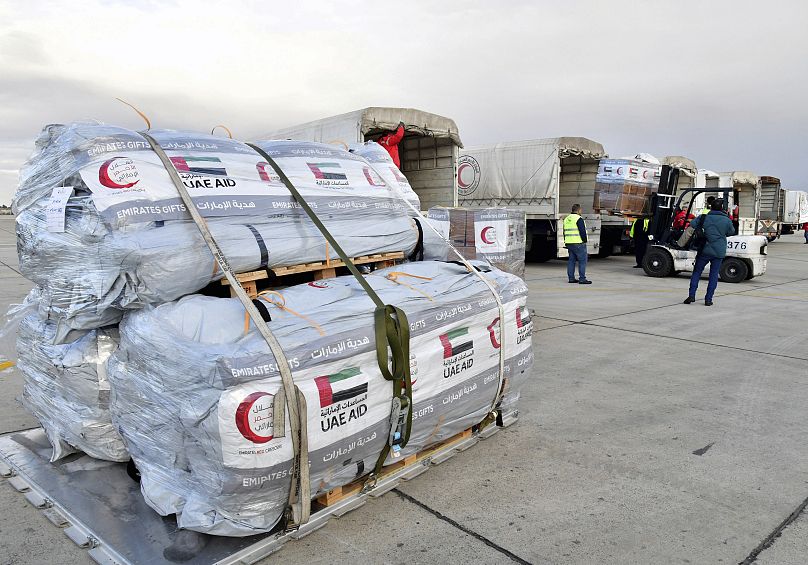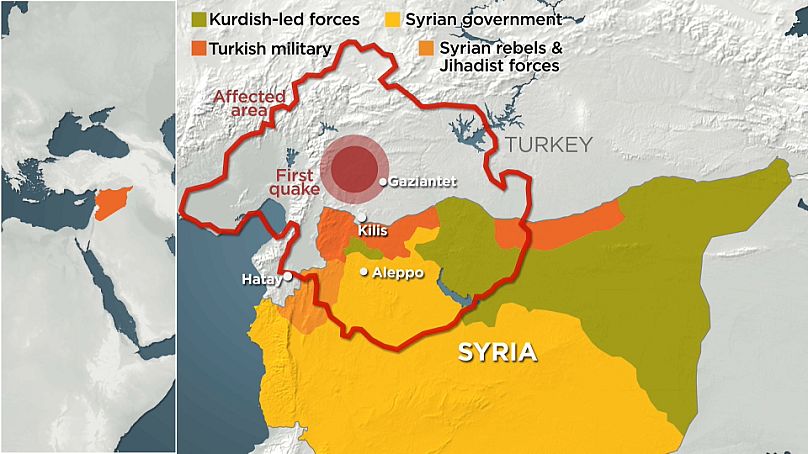After more than ten years of civil war, parts of northern Syria are housing millions of internally-displaced people. Now, struck by two devastating earthquakes, can aid agencies deliver the help and support needed?
In the days after two deadly earthquakes hit south eastern Turkey and northern Syria, most people online have been searching for the latter over the former. According to Google Trends data, only two countries -- Norway and Poland -- have had more searches for Syria, compared with Turkey.
Syria has been in the throes of a deadly civil war for nearly 11 years and much of the area most-heavily impacted by the earthquakes is not under government control. Millions of internally-displaced people have been sheltering there and getting enough help to them was already a challenge.
"You'd have done well to pick a worse place to be affected by an earthquake of this magnitude", says Mark Kaye, from the International Rescue Committee.
"Some of the people that we work with in northwestern Syria have been displaced more than 20 times over the last 12 years."
Huge cholera outbreak feared
Millions in northern Syria live in camps for internally-displaced persons. Tents have generally not been affected, but other key facilities have fared poorly.
"The camps are terrible. It's rained, so there's a lot of mud", says World Vision Syria Response Director, Johan Mooij, who has workers on the ground with internally displaced people.
"One of our fears now is that if there's no good drinking water, cholera will explode. Basic services are down. It is a terrible situation indeed."
While some aid agencies are already based in the region, many of their workers, like the rest of the local population, have been left in dire straits. And that is hindering the response on the ground.
"Many of our staff simply don't have anywhere to sleep", Kaye says. "[They] are spending the night sleeping on the floors of schools, in mosques, in sports halls or even in their cars. Even having our own office at the moment is proving difficult because some of our field offices have been quite severely damaged by the earthquake itself".
Difficulties crossing into Syria
In southern Turkey, rescuers and aid efforts have been hampered by the destruction. Roads have been destroyed, along with other crucial infrastructure. In northern Syria, agencies face an additional problem, however -- the border itself.
As a result of the ongoing civil war, Syria's northwest is divided between government, rebel and Turkish control. Before the earthquakes, most humanitarian aid entered the area from Turkey. However, restrictions on what can -- and cannot -- come in, as well as a lack of overall capacity, mean not enough material is getting through.
"The entire area is largely reliant on one border crossing point from Turkey for UN aid assistance that wasn't already sufficient", says Mark Kaye.
While some aid has been requested by and sent to the Syrian government, it remains a small portion of what is currently needed. And there is no communication between the Syrian President Bashar al-Assad and the rebel factions. What's more, diplomatic relations between most Western governments and Damascus, are non existent.
As Xavier Castellanos from the International Federation of Red Cross and Red Crescent Societies notes, "limitations that we can face around sanctions do affect the speed [at which] we can intervene."
"[They] affect the capacity to allocate financial resources, to enter and to operate... it will require more flexibility."
"Most of the resources in funding, search and rescue teams, at the moment seems to be heading towards southern Turkey where there are significant needs, but we need to make sure that Syria isn't forgotten. The earthquake doesn't recognise borders."














